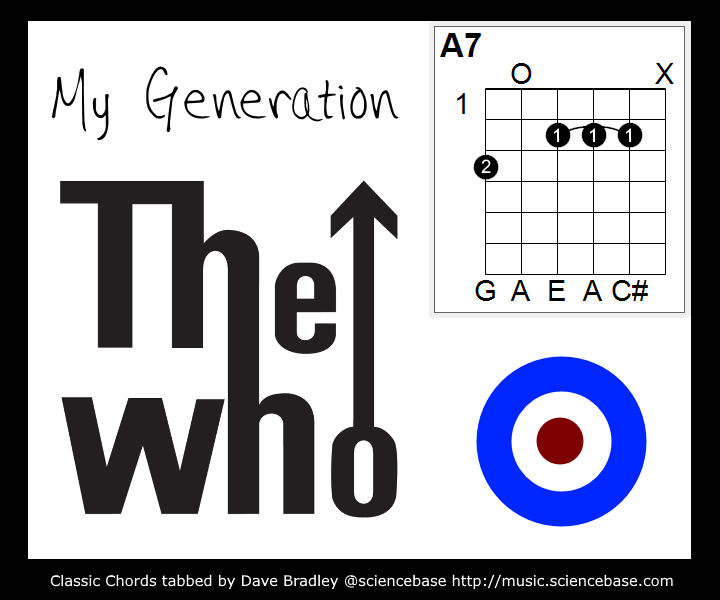The Who’s Pete Townshend was by turns a maestro on the acoustic guitar and a wall-of-sound man on the electric. Stacks of amps and speakers, his windmilling right arm, the leaps and kicks and, of course, the smashing up the guitars and hotel rooms in equal measure, allegedly. On the acoustic there was the high-speed percussive, expansive rhythmic strumming, the big sus4 chords of “Pinball Wizard”. On the louder than loud live rockers like “My Generation” it was power and distortion that mattered. I seem to recall reading the it was Townshend who not only was first to use a stack of 4×12 speaker cabinets, which became the staple of heavy rock from its definition in the late 60s of the increasingly loud British Blues Explosion but also the inventor of the power chord (the hard attack, heavily distorted, long sustained, major triads missing their third not, the 5th chords in other words. But, some would say Link Wray invented the power chord in “Rumble”, but that’s not a power chord to my ear!
One of Townshend’s tricks, when pitting his wits against the massive power of John Entwistle’s pounding and intricate bass licks was to play the part of a more conventional bass guitar line but on his six-string. So, we have the opening of “My Generation”, which nominally just goes from G to F. But in reality he was tuned down a tone and playing the bottom notes of an Amaj shape and then adding the descending bass with the thumb to take him from A to A/G (by pitch it was actually the G to G/F). A similar pattern was used on other songs and by other bands, not least Rush, who were/are massive Who fans (hear the that A to A/G trick in the likes of “Natural Science” from Permanent Waves and elsewhere.
Here’s a snippet of me doing some of that kind of stuff. First playing an actual G to G/F at pitch in standard EADBGe six-string tuning, and then in the same tuning A to A/G with some bending on that bottom string and then ascending through C-C/B to D-D/C and back to riffing on the A chord with the thumbed G note on the sixth string. To be honest the B string doesn’t necessarily come into play.
More Classic Guitar Chords here.
